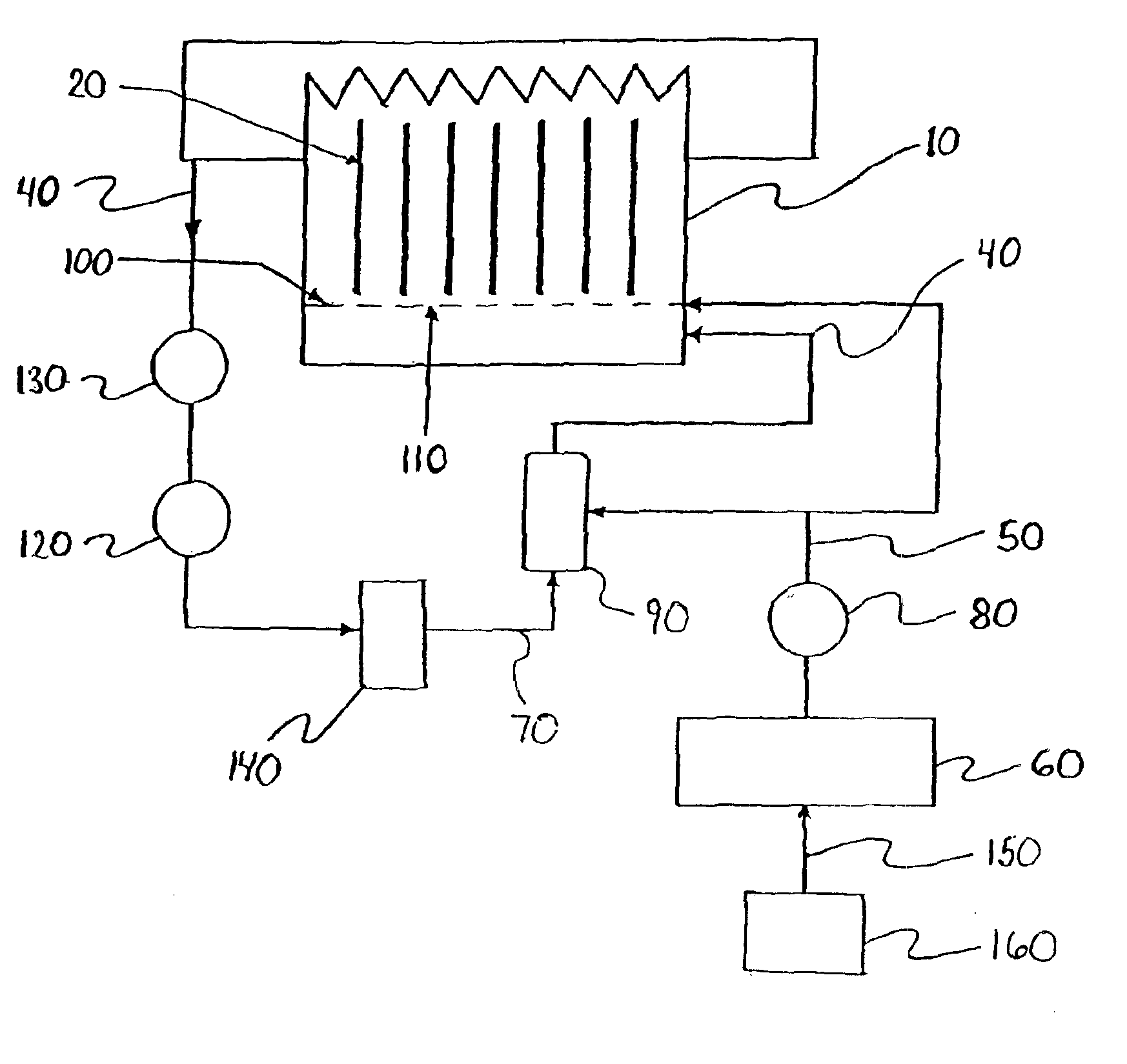Method for removal of photoresist using sparger
a technology of sparger and photoresist, which is applied in the field of silicon semiconductor manufacturing, can solve the problems of affecting the ability to further process the workpiece, affecting the ability to remove photoresist, and tracing impurities, etc., and achieves the effect of efficient and fast methods of removing photoresis
- Summary
- Abstract
- Description
- Claims
- Application Information
AI Technical Summary
Benefits of technology
Problems solved by technology
Method used
Image
Examples
Embodiment Construction
According to the invention, an apparatus is disclosed which includes cassettes filled with semiconductor wafers having a layer or multi-layers of photoresist wherein the semiconductor wafers are exposed to pressurized DIO3 water at ambient temperatures and with a velocity produced by a sparger plate so as to etch or remove the photoresist at a higher rate than previously known.
Preferably the process tank containing the silicon wafers from which photoresist is to be removed or etched contains a fixed amount of DI water at ambient or higher temperature. O3 is generated with a generator. A portion is directed to a pressurized ozonator where it is mixed with DI water and then introduced into the process tank through the sparger, and another portion of the O3 is introduced directly to the sparger plate.
The DIO3 flows from the tank through a sensor, then to a pump, a filter, to the ozonator where it is pressurized, and then back to the pressurized plenum (sparger) at the bottom of the pro...
PUM
| Property | Measurement | Unit |
|---|---|---|
| Temperature | aaaaa | aaaaa |
| Temperature | aaaaa | aaaaa |
| Concentration | aaaaa | aaaaa |
Abstract
Description
Claims
Application Information
 Login to View More
Login to View More - R&D
- Intellectual Property
- Life Sciences
- Materials
- Tech Scout
- Unparalleled Data Quality
- Higher Quality Content
- 60% Fewer Hallucinations
Browse by: Latest US Patents, China's latest patents, Technical Efficacy Thesaurus, Application Domain, Technology Topic, Popular Technical Reports.
© 2025 PatSnap. All rights reserved.Legal|Privacy policy|Modern Slavery Act Transparency Statement|Sitemap|About US| Contact US: help@patsnap.com


